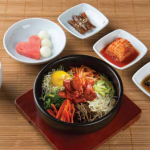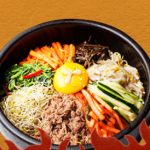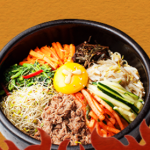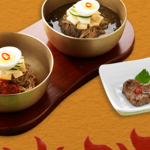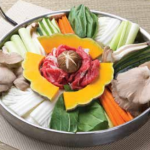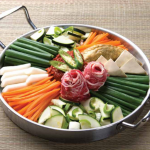Have you ever found yourself craving a mouthwatering bowl of kimchi or a sizzling plate of bibimbap? Korean cuisine has long captivated food enthusiasts worldwide with its unique blend of flavors, textures, and vibrant colors. From fiery and spicy dishes to comforting and nourishing soups, Korean food offers a delightful culinary adventure that is sure to leave you craving for more. Join us as we explore some of the most iconic and beloved dishes in Korean cuisine.
Introduction: A Taste of Korea
Title: A Gastronomic Journey: Exploring Iconic Delights of Korean Cuisine
In this blog post, we delve into the realm of Korean cuisine, tracing its rich heritage and highlighting the dishes that have come to represent the essence of Korean culinary artistry. Get ready to tantalize your taste buds and embark on a journey of flavors, textures, and unforgettable gustatory experiences.
The Alluring World of Korean Culinary Delights
1. Kimchi: The Beloved Fermented Side Dish
No discussion of Korean cuisine can begin without mentioning kimchi. This tangy, spicy, and fermented side dish has become an icon of Korean food culture. Made primarily with napa cabbage and Korean radishes, kimchi is seasoned with a mixture of chili flakes, garlic, ginger, and salted seafood. Bursting with probiotics and vitamin C, kimchi not only tantalizes the palate but also contributes to a healthy gut flora.
2. Bibimbap: A Colorful Harmony
Bibimbap, which translates to “mixed rice,” is a vibrant and hearty dish that embraces a kaleidoscope of flavors. Served in a hot, stone bowl, it combines warm rice with an assortment of sautéed vegetables, marinated meat, a sunny-side-up egg, and a fiery gochujang sauce. The result is a symphony of textures, as the crispy rice at the bottom meets the diverse toppings, creating a delightful play of flavors in every bite.
3. Japchae: Glass Noodles of Good Fortune
Japchae, also known as Korean glass noodles, is a stir-fried dish that boasts a harmonious blend of chewy noodles, tender vegetables, and savory meat. Made from sweet potato starch, these translucent noodles take on an appetizing glimmer when cooked. Tossed with soy sauce, sesame oil, and an array of vegetables, japchae offers a delightful medley of flavors and a satisfying textural experience.
4. Bulgogi: Grilled Perfection
Bulgogi, translated as “fire meat,” is a succulent and marinated grilled dish that never fails to impress. Thinly sliced beef is marinated in a mixture of soy sauce, ginger, garlic, and pear juice to achieve a tender and tantalizing taste. Grilled to perfection, bulgogi showcases the melding of sweet and savory flavors, enticing even the most discerning palates.
5. Samgyeopsal: Sizzling Pork Belly Delight
Samgyeopsal is a beloved dish in Korean BBQ culture, where thinly sliced pork belly is grilled to crispy and succulent perfection. Often enjoyed with a variety of side dishes, including lettuce leaves for wrapping, kimchi, and pickled radishes, samgyeopsal offers an interactive dining experience that combines the joy of grilling with the pleasure of indulging in juicy, flavorful meat.
Conclusion: A Culinary Adventure Awaits
Korean cuisine is an art form that celebrates the harmony of flavors, the vibrant colors, and the rich heritage of the Korean people. Whether you’re a fan of spicy dishes or crave the comforting warmth of a nourishing bowl of soup, Korean cuisine has something to offer everyone. Embark on a culinary adventure and discover the flavors that have made Korean dishes truly iconic.
FAQ
Q1: Is Korean cuisine always spicy?
Not all Korean dishes are fiery and spicy. While some dishes, like kimchi and gochujang-based sauces, boast a fiery kick, there are plenty of milder options available. Korean cuisine encompasses a wide range of flavors and can cater to varying spice preferences.
Q2: Can I find vegetarian or vegan options in Korean cuisine?
Absolutely! Korean cuisine offers a range of vegetarian and vegan dishes. Bibimbap, for example, can be prepared without meat, and many vegetable-based side dishes, such as sautéed spinach and soybean sprout salad, are staples of Korean cuisine.
Q3: Are Korean BBQ restaurants suitable for vegetarians or vegans?
While Korean BBQ restaurants primarily focus on grilled meats, some establishments offer vegetarian alternatives such as tofu or mushroom options. It’s advisable to check with the restaurant beforehand to ensure they can accommodate specific dietary preferences.
Q4: Are Korean dishes gluten-free?
Korean cuisine heavily relies on soy sauce, which typically contains wheat. However, gluten-free alternatives such as tamari (gluten-free soy sauce) or coconut aminos can be used as substitutes. Additionally, many dishes like bibimbap and Korean soups can be enjoyed without any gluten-containing ingredients.
Q5: Are Korean dishes commonly shared or individually portioned?
In Korean dining culture, sharing dishes is the norm, creating an enjoyable communal experience. While individual portion sizes are also available, it is common to order a variety of dishes to share among the group, enhancing the conviviality and variety of flavors during the meal.
Embark on a journey through the tantalizing world of Korean cuisine, where each dish beckons with its own unique flavors, aromas, and textures. From the ever-present kimchi to the grilling experience of samgyeopsal, Korean cuisine offers a delightful adventure that will leave both your stomach and your taste buds singing with joy.
– Sambut: embrace
– Menyelerakan: tantalizing
– Keunikan: uniqueness

